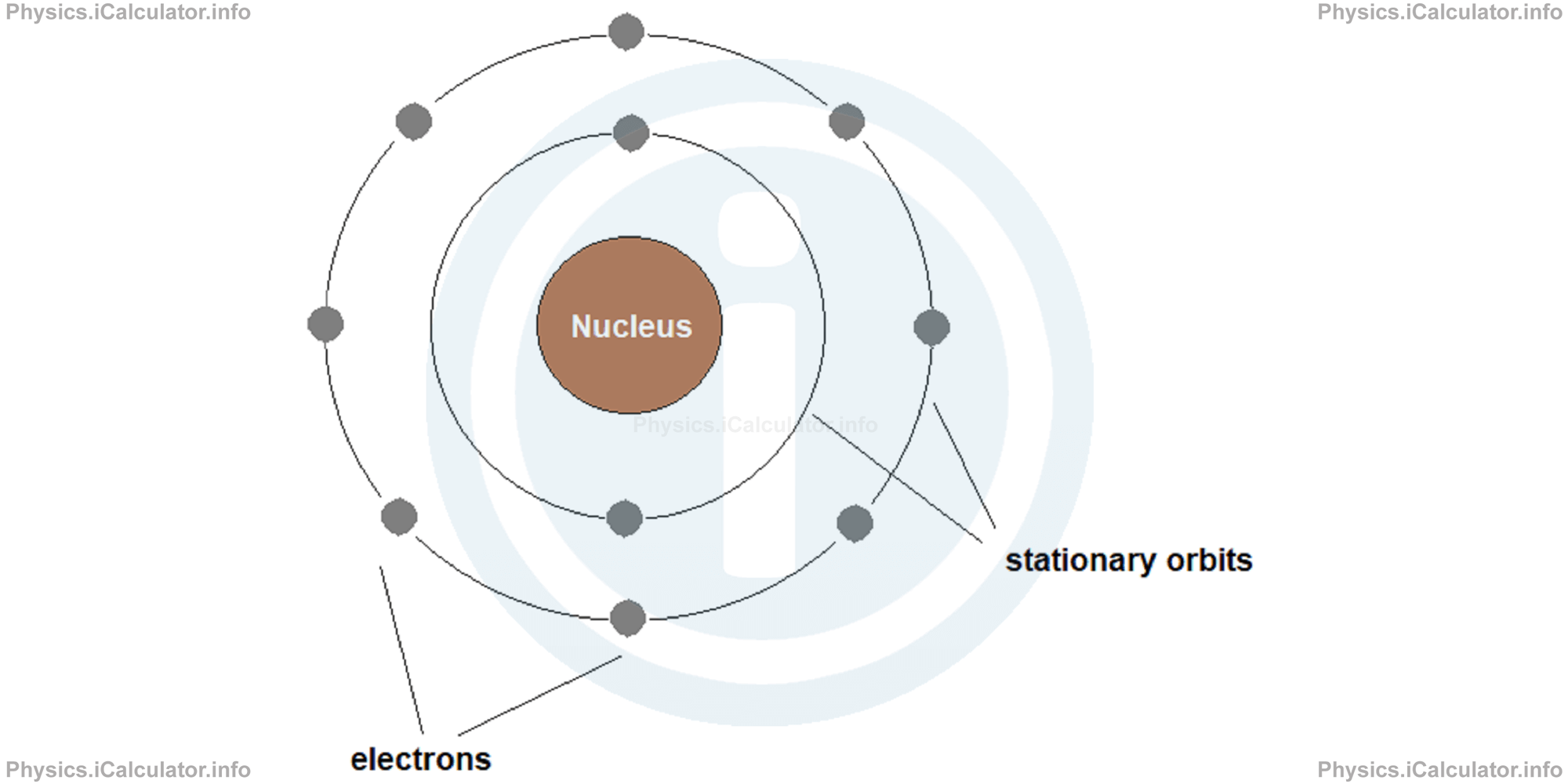Menu
Physics Lesson 20.1.4 - Bohr's Atomic Model
Please provide a rating, it takes seconds and helps us to keep this resource free for all to use
Welcome to our Physics lesson on Bohr's Atomic Model, this is the fourth lesson of our suite of physics lessons covering the topic of Atomic Nucleus and Its Structural Properties, you can find links to the other lessons within this tutorial and access additional physics learning resources below this lesson.
Bohr's Atomic Model
The issue of atom's stability was resolved by Niels Bohr, who in 1913 proposed a new model, in which electrons move in determined circular orbits around the nucleus, similarly to the revolution of planets around the Sun. This prevents them from losing energy during such revolutions. 
With his atomic model, Bohr proposed two courageous postulates:
- The postulate of stationary states: An electron can revolve around the nucleus in certain fixed orbits of definite energy without emission of any radiant energy. Such orbits are called stationary orbits.
- The postulate of frequencies. An electron can make a transition from a stationary state of higher energy E2 to a state of lower energy E1 and in doing so, it emits a single photon of frequency f, the value of which, is given by
where h is the Planck's constant.
A generalized version of the second postulate would be:
"An atom (electron) can emit or absorb radiation only during its transition from one stationary energetic level (orbit) into another."
In a certain sense, the Bohr's atomic model represents the beginning of modern quantum mechanics. Although now this model is outdated, it is still used for convenience to describe the atom, especially in explaining the energetic levels of hydrogen atom.
Now, the next question that arose regarded the structure of atomic nucleus. Is it an object without any internal structure that only manifests some special features or maybe there are other elements inside it? Further investigations and experiments confirmed the second hypothesis, i.e. atomic nucleus contains other particles inside. Let's see this aspect more in detail.
You have reached the end of Physics lesson 20.1.4 Bohr's Atomic Model. There are 9 lessons in this physics tutorial covering Atomic Nucleus and Its Structural Properties, you can access all the lessons from this tutorial below.
More Atomic Nucleus and Its Structural Properties Lessons and Learning Resources
Whats next?
Enjoy the "Bohr's Atomic Model" physics lesson? People who liked the "Atomic Nucleus and Its Structural Properties lesson found the following resources useful:
- Bohr Feedback. Helps other - Leave a rating for this bohr (see below)
- Nuclear Physics Physics tutorial: Atomic Nucleus and Its Structural Properties. Read the Atomic Nucleus and Its Structural Properties physics tutorial and build your physics knowledge of Nuclear Physics
- Nuclear Physics Revision Notes: Atomic Nucleus and Its Structural Properties. Print the notes so you can revise the key points covered in the physics tutorial for Atomic Nucleus and Its Structural Properties
- Nuclear Physics Practice Questions: Atomic Nucleus and Its Structural Properties. Test and improve your knowledge of Atomic Nucleus and Its Structural Properties with example questins and answers
- Check your calculations for Nuclear Physics questions with our excellent Nuclear Physics calculators which contain full equations and calculations clearly displayed line by line. See the Nuclear Physics Calculators by iCalculator™ below.
- Continuing learning nuclear physics - read our next physics tutorial: Nuclear Forces, Defect of Mass and Binding Energy
Help others Learning Physics just like you
Please provide a rating, it takes seconds and helps us to keep this resource free for all to use
We hope you found this Physics lesson "Atomic Nucleus and Its Structural Properties" useful. If you did it would be great if you could spare the time to rate this physics lesson (simply click on the number of stars that match your assessment of this physics learning aide) and/or share on social media, this helps us identify popular tutorials and calculators and expand our free learning resources to support our users around the world have free access to expand their knowledge of physics and other disciplines.